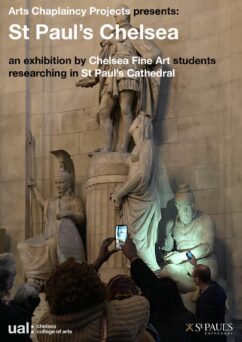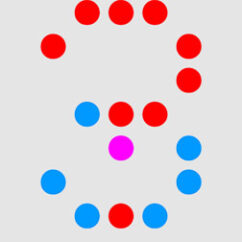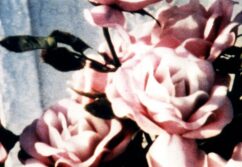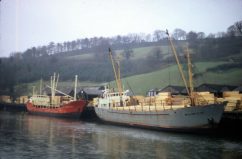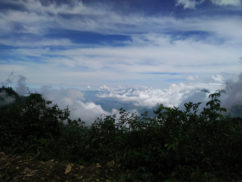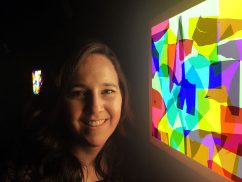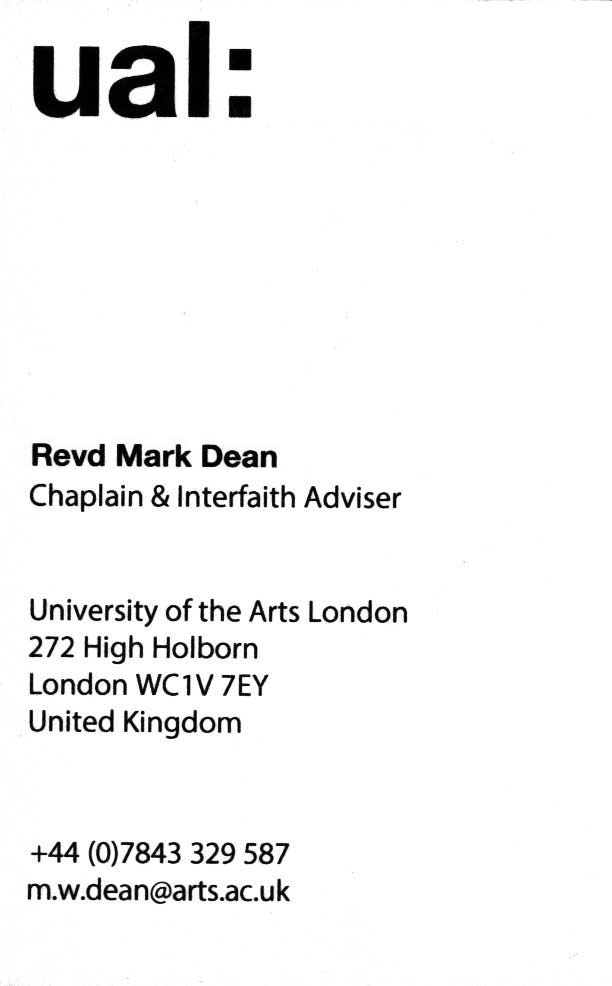Back To Life
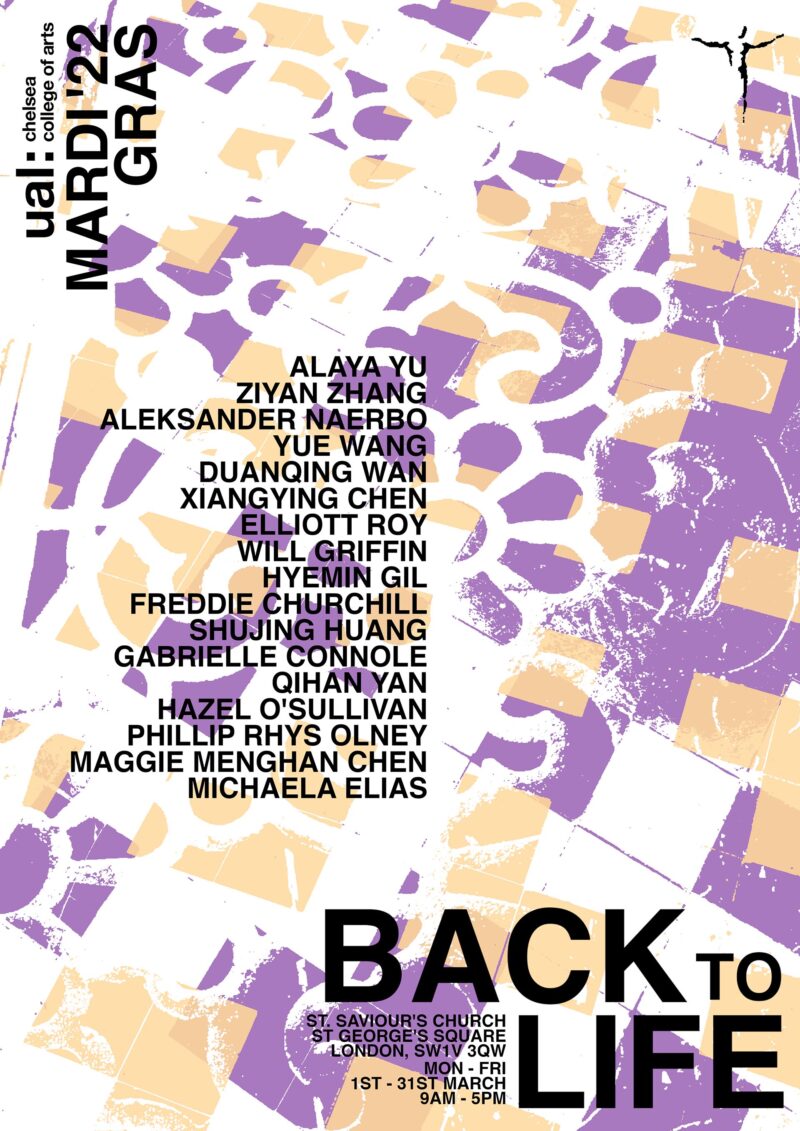
poster design: Phillip Rhys Olney
St Saviour’s Pimlico
St George’s Square
London SW1V 3QW
Monday-Friday 9am-5pm
Shrove Tuesday 1 March 3-5pm
Exhibition preview + Mardi Gras pancakes in the Parade Ground, Chelsea College of Arts
(pancakes are served free of charge but donations to The Outside Project will be welcome)
Sunday 6 March 12 noon-1pm
Artists’ reception and tour (following St Saviour’s 10.30 service, to which all are welcome)
Thursday 31 March 5pm
Exhibition closes
Back to Life is a Lenten exhibition of work by students on the MA Fine Art course at UAL Chelsea College of Arts, organised by Arts Chaplaincy Projects in collaboration with St Saviour’s Pimlico, and produced with an awareness of and respect for contemplative spaces, in particular the Anglo-Catholic setting of St Saviour’s church, whilst also attesting to the cultural diversity of the communities of Chelsea college and Pimlico parish. (nb this is our second exhibition together – please also see Chelsea Mardi Gras 2020)

LIST OF WORKS (clockwise from entrance)
MICHAELA ELIAS

Untitled
(handmade paper from bark of trees)
Becoming intrigued by the traditional ancient craft of hand made paper I mould them onto armatures such as chicken wire and experiment with lighting.The core of the material is many of life’s necessities. The process of the craft is laborious, but meditative in a sense that is satisfying, successfully pulling a sheet of paper from scratch. I desire to create an ecosystem, a world of my own where I and others can go. Creating a safe physical place where people can visit freely for an escape or contemplation. An installation, an immersive environment to transform peoples experiences and awaken their heart. Recently being stuck indoors I developed a craving for nature. It boosts mood and physical wellbeing. The feeling of happiness and aliveness is the energising effect of physical activity and social interaction I want to capture and preserve. Longing to replicate the feeling that nature persists by growing grass and exploring alternative ways to contain the material.
HAZEL O’SULLIVAN
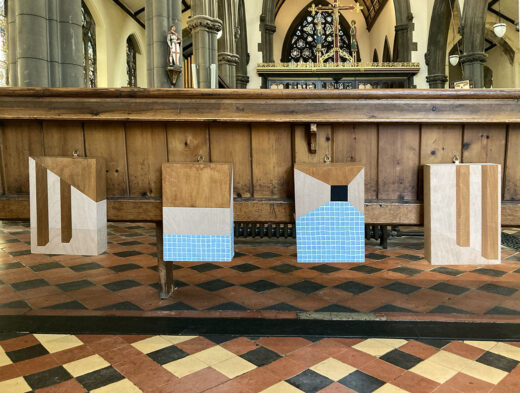
‘Hassocks’
(wood stain, wallpaper on plywood boxes)
These four ‘Hassocks’ are wooden representations of the hand-stitched padded cushions provided at the back of each pew at St. Saviours Church, and installed in their replacement. The hollow wooden boxes depict an architectural environment created with the combination of wood stain and domestic wallpaper. Taking inspiration from the existing architecture at St. Saviours and decorative techniques applied to home interiors, I hoped to reflect a sense of community that is at the heart of the church.
DUANQING WAN
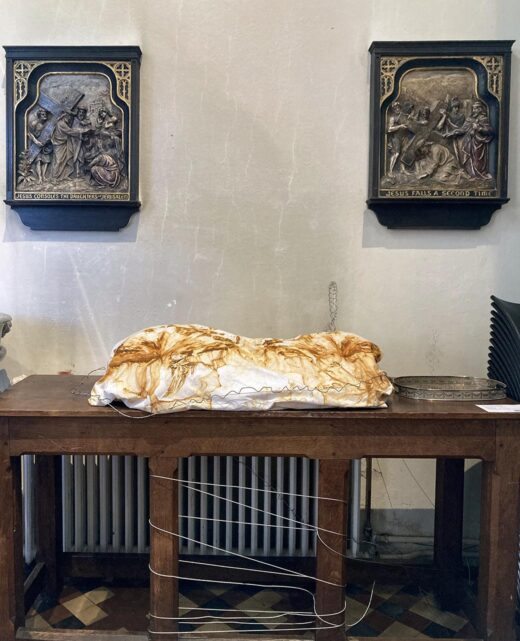
‘Possess’
(low carbon steel, sheets)
The work attempts to decenter the theme, eliminating the storytelling and constructing only the basic logic. The work uses “rust” and “bed sheet” as the basic elements to build relationships. The work juxtaposes personal, private, prosperous, decaying, grand, rotten, extended, wrapped and other temperaments. The extent to which these temperaments occupy the work will fluctuate with the environment and the subjective consciousness of the person. New externalities will continue to be attached to these basic elements, and new “stories” will be born in the works.
WILL GRIFFIN
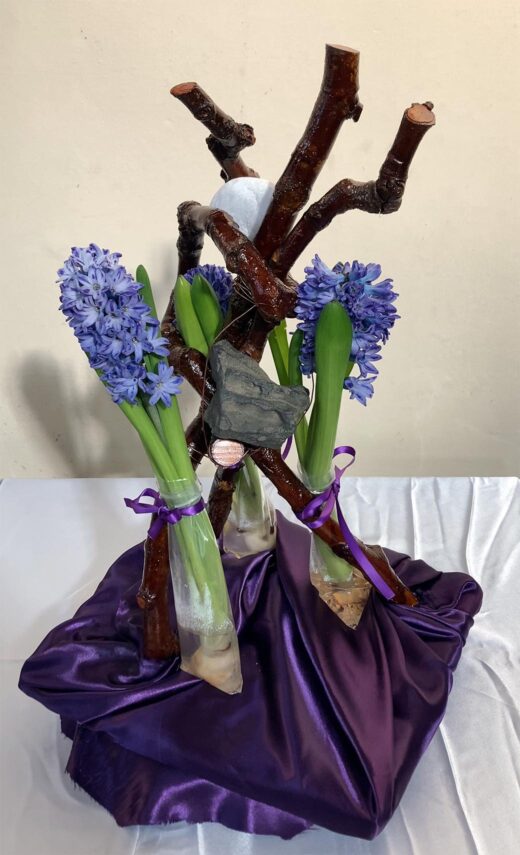
‘The Spirituality of Three’
(shellac, branches, stones, flowers)
Shellacked branches interwoven with scented flowers in a form of an offering made to suggest implied motion. The number 3 is constantly referenced in biblical stories and western culture, the Holy Trinity, The 3 Mary’s, Christ rose after 3 days, the past, present and future etc. This is my artistic interpretation of the Mystical number that is 3.
ALAYA YU

‘Revelation’
(installation & audience interaction, bamboo, linen, cushion)
To sit in two naturally-made tents of primitive construction, without talking or doing—no words, no gestures, no activity or any language. This is perhaps the oldest and the simplest way of spreading knowledge and wisdom.
Staring at each other, releasing the intensity of the spirits and souls, or closing the eyes, listening to the tranquil sounds from the church, concentrating from the depth of the heart. Surrounds are melting, invisible, disappearing at the moment. Being at present is the essence of life.
Meanwhile, a space is revealed within a space. Which is the reality? I hope the audiences could catch a new perspective or subtle sensation that relationship of the distance in the realistic world between the different spaces.
XIANGYING CHEN

‘A Reconciliation with All’
(plastic)
I remember praying as a very common activity that people do in church, people would do it no matter what happened in their life, for example, to beg for forgiveness if they have done something bad, or to tell the Lord through themselves if they have done something good. Thus, the church is filled with countless experiences from different people. Here, always an atmosphere of harmony, it seems like all good and bad things can counteract under one roof, like the classic game: Tetris, where squares cancel each other out, even though new ones are created all the time. With its own tangible body, the church shows its tolerance of all things and provides a place where all things can be reconciled.
ALEKSANDER NAERBO

‘Jesus’
(charcoal on canvas)
Jesus is depicted in various different styles and colours throughout times and cultures. This is my interpretation of him.
GABRIELLE CONNOLE

‘We’re all working for the same boss’
(performance and photographic installation)
Her name was Edna, she was a devout Christian and a devout skater. I never met my grandmother, however through this work I feel a real sense of connection to her spirit.
One evening with the permission of Father Matthew, I made drawings with light through long exposure photography at St Saviours. With lights attached to my body, I roller-skated in the church to Roy Orbison’s, ‘In Dreams’.
We’re all working for the same boss is a site-specific work that involves light, love and connection. An opportunity to enrich my own understanding of womanhood, and fittingly the photographic print can be found in the Lady chapel.
ELLIOTT ROY
Untitled
(melted candle wax)
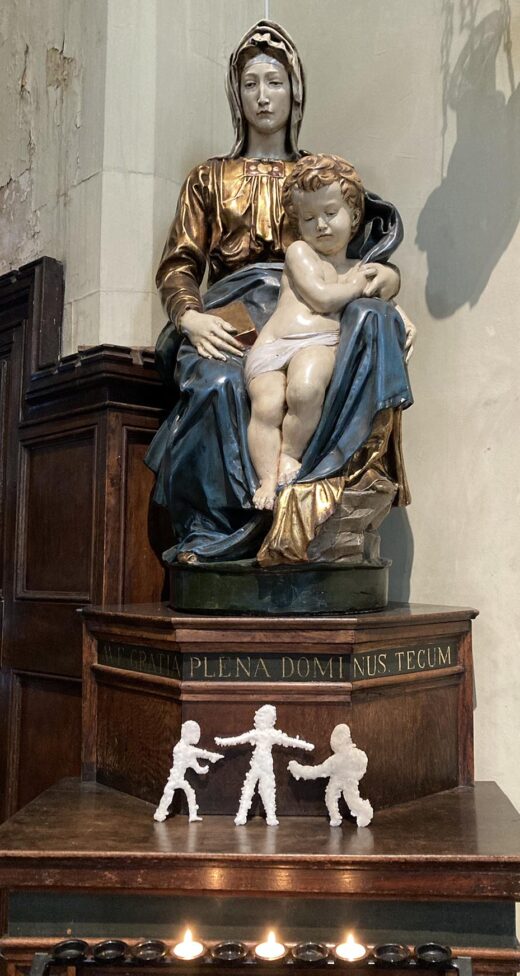
ZIYAN ZHANG
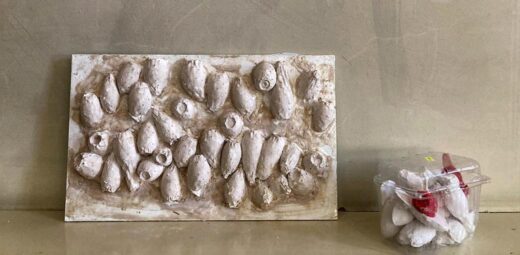
‘Death comes from ease and pleasure’
(plaster)
The plaster cactus is constantly eroded by a mixture of resin and starch, leaving a deep, scar-like texture. The regular arrangement of cacti is reminiscent of a group photo. It reflects the process by which individuals are disciplined. Cactus endure pain and kinds of hardships to achieve the “sublimation”.
YUE WANG
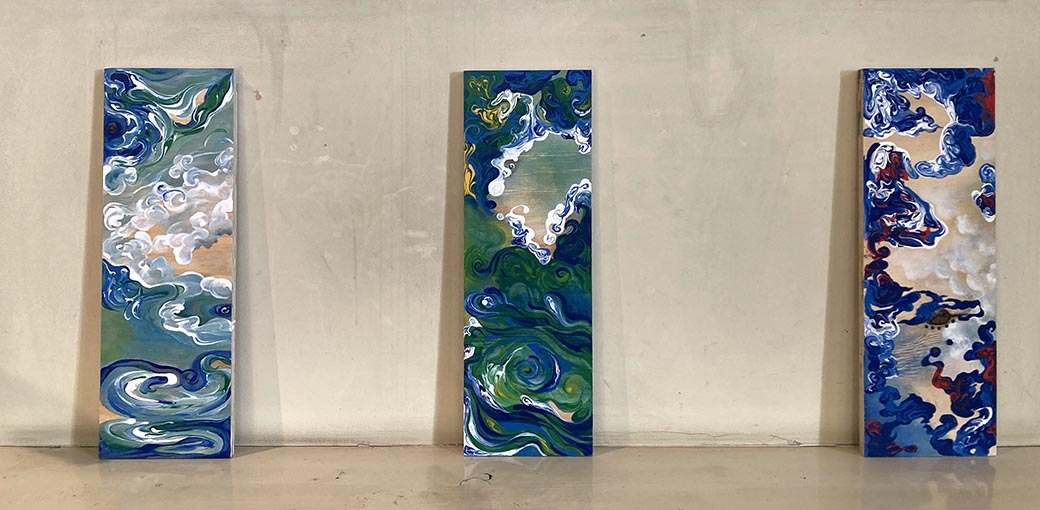
‘Chaos & Symbiosis’
(wooden board, watercolour paint)
Chaos is a mythological term that exists widely all over the world with different meanings, but in almost all of the myths, the world originated from chaos, until some god separated the various elements.In my opinion, the world is still in a state of chaos, but this is not a bad thing for me. Many things do not need to be distinguished too clearly, for example, useful and useless, harmful and harmless, exclusion and symbiosis, etc. I am more inclined to use ways like de-marginalization, shifting perspectives, adjusting the thinking to deal with some seemingly negative things. This is a series of works I painted with watercolour paint. Different colours were meeting, blending, and coexisting, forming a rich and interesting image. These boards are scraps from the
construction site. They were both discarded because they were defective, they were marginalised so that was the perfect medium for me. The composition of the drawing depended on the cracks and holes in the wood. I wanted to use these images to express the realistic background of symbiosis with various marginal things.
PHILLIP RHYS OLNEY
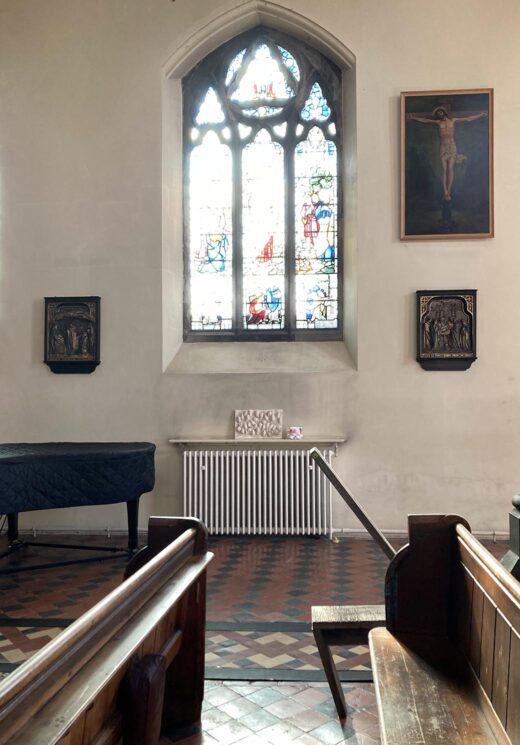
‘I’m Not A Praying Man, But I’ll Kneel To That’
(scaffolding board, bolts)
A free standing chair designed to force and contort its user into a position akin to how my father has had to sit during his career at Southampton Container Terminals. During services at St. Saviours in Pimlico, I was struck by the up-down procession of the rituals in the pews. It is analogous with the vertical movement of containers carried by the dockyard’s cranes. My father sits, head between his legs, looking downward, for 12 hr shifts. He undertakes an analogous act of communion with a different type of higher power, one shared with the congregation of an often forgotten workforce.
SHUJING HUANG
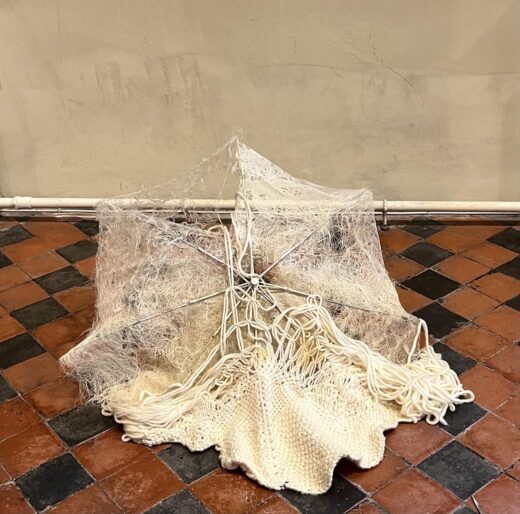
Untitled
(metal, fabric)
A sculpture made of metal and fabric. The skeletal shape of the umbrella and the deconstruction of the fabric are used to express the sense of security one seeks in life. The sparseness of the fabric responds to the different rhythms of breathing. Ending with the contact of the umbrella with the church floor, petal-like shapes are produced. Another piece in the series, the umbrella eventually becomes a spider’s web. The physical space created by the umbrella and the psychological distance between it and the crowd allowed me to imagine scenarios where security might be directed, which could end in safety but also in danger.
FREDDIE CHURCHILL
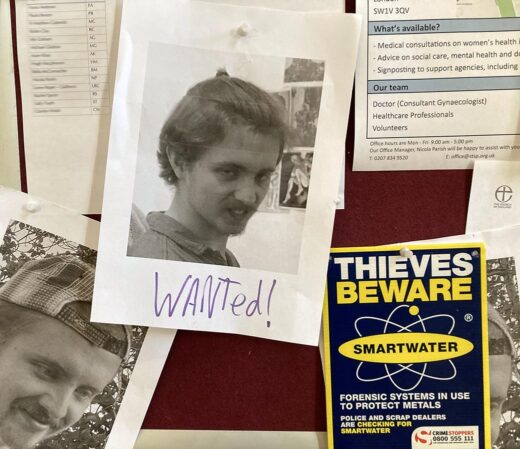
‘Wanted’
(paper)
This ongoing project is centred around creating mystery around my personality. A large majority of my work spirals around myself and who I am. I enjoy toying with how I present myself as an artist. Here I present myself as a wanted man and a felon to create intrigue and a discussion. But also to confuse people. It’s a little prank you see.
MAGGIE MENGHAN CHEN
‘Aura in the Garden of Earthly Delights’
(video)
The animation is a digital render of Hieronymus Bosch’s portrayal of the Fountain of Paradise in the Garden of Earthly Delights. The artist explored neo-sublimity and religiosity in the age of digitalization.
HYEMIN GIL

‘Pungyung Sound’
(paper, light)
Paper bell shape sculpture is hung in the air. Light makes the drawing on the inside of the paper visible. This light flashes traces from the inside and it echoes through the font.
Pungyung sound is a light bell without any actual sound. Absence can sometimes be more tangible after someone’s presence. Korean word ‘pungyung’ is a homophone for wind bell and landscape. This work is a voice of a landscape, nature around us that share some memories with people.
Unheard and unseen things are powerful as much as loud and vivid ones. From a gaze of this installation work, we would notice some absence and silence brings more clear perception and importance of believe in things that are not seen. I hope this work could brings new perspectives and gives audiences an experience that can related to looking at a light house, a reminder of navigation, and a feeling of looking a landscape.
With special thanks to Fr Matthew Catterick, Patti Ellis, and Nicola Parish



